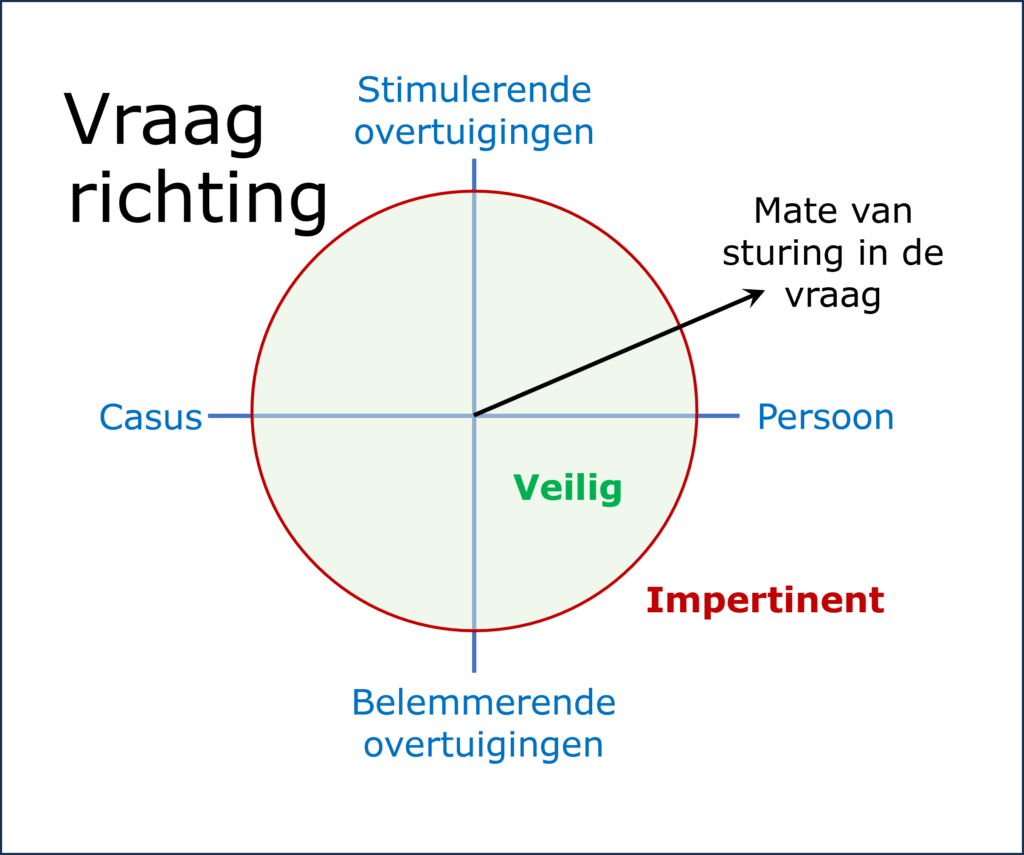Direction of Questions
I've come to realize that my approach to questioning, especially during training sessions aimed at revealing participants' underlying beliefs, tends to be quite directive and forceful. Feedback from colleagues varies; some view this method as effective, while others advocate for a more open, exploratory approach. They suggest listening neutrally and continuing to ask questions to delve into the participant's issues without imposing any direction, allowing the participant to guide the conversation's flow.

This has led me to devise a framework for understanding the potential directions questions can take. I'll outline the concept for you here and briefly explain how the diagram is constructed:
First of all, the vertical axis, a choice emerges in conversations: delve into what may be holding someone back (represented at the bottom of the diagram) or identify what encourages them (highlighted at the top). Opting for the encouraging route involves exploring what's working well to heighten awareness of these positives. In my training sessions, I often focus downwards, aiming to pinpoint precisely where a participant may be encountering obstacles.
In your approach to questioning, there's the option to veer left or right. Venturing left in the diagram focuses on the substantive issue at hand—the case itself. However, shifting right centers on the individual, delving into the personal thought processes that underpin their responses to problems. This rightward shift is where I find the most value, as it moves beyond addressing a transient issue to uncovering deeper personal bottlenecks. For instance, you might inquire, "What is it about this problem that impacts you significantly?"
Impertinent Questions
Within the diagram, a green circle marks the realm of safe inquiry, where questions are generally acceptable and within conventional boundaries. This is where techniques like my colleague's empty listening fall, prompting questions such as, "Can you elaborate on that?" or "What's your personal experience with this?"
Venturing beyond this circle, however, leads into the realm of more probing, potentially intrusive questions. Without a solid rapport or mutual understanding, these questions can overstep boundaries and venture into sensitive territory.
I admit, there's a certain allure to treading into this more audacious space, especially in relaxed, informal settings. It awakens a mischievous aspect of my personality, cloaking bold inquiries in seemingly innocent guise. And yet, it's these very questions that often open doors to new insights and breakthroughs in training sessions, guiding participants into unexplored territories ripe for discovery.
Where do you find yourself gravitating within this framework of inquiry?